When purchasing a home comfort system, it is important to know what some of the numbers mean especially when it comes to efficiency ratings as they are directly related to savings on your energy bill.
What is SEER?
When it comes to Air Conditioners (and air source heat pumps), the most prominent energy rating we encounter in Canada is the SEER. SEER stands for Seasonal Energy Efficiency Ratio and it is based on a standard set by the air-conditioning, heating, and refrigeration institute, an american trade organization. The calculation is simple; the amount of cooling done by the A/C or heat pump during a typical warm season divided by the total electric energy spent during that same season. The higher the SEER, the better.
[swf src=”http://www.carrier.ca/assets/flash/seer_en.swf” width=320 height=170]
The Canadian government requires all new air conditioning products to have a SEER of at least 13, that is why it is crucial to replace your old unit if it has an energy rating below that. A SEER of 18 and above is what is normally considered as high-efficiency.
What is AFUE?
The Annual fuel utilization efficiency rating, or AFUE rating is to gas furnaces what SEER is to Air Conditioners. It is defined by a standard set by the American Society of Heating, Refrigerating and Air-Conditioning Engineers, and it is a percentage of how much of the gas that the furnace consumes, in average, is actually used to heat up your home during the whole cold season. Just like the SEER; the higher, the better. Typically, a AFUE rating in the 95% region and above is considered high-efficiency.
[swf src=”http://www.carrier.ca/assets/flash/afue_en.swf” width=320 height=170]
What is HSPF?
Because air source heat pumps can heat your house as well as cool it, they have two efficiency ratings associated with it. the SEER (explained above) for when it is cooling the house during summer and the Heating Seasonal Performance Factor, or HSPF (based on the same standard as the SEER) during the cold months when it helps heat up your home. Again, just like the SEER, a higher HSPF means more savings. High-efficiency heat pumps are typically given a HSPF of 9.0 and above.
[swf src=”http://www.carrier.ca/assets/flash/hspf_en.swf” width=320 height=170]
And speaking of heat pumps…
A home comfort system consisting of a furnace and heat pump typically give you the highest energy savings but it is important that all of the components are matched correctly for higher energy efficiency, otherwise the individual units may never be able to perform at their optimum level of efficiency. The outdoor units need to be matched properly with the indoor units – indoor coils, air handlers, etc – in order for this to happen.
How to read those EnerGuide tags?
As Canadians, due to our particular weather conditions, our energy needs and efficiency requirements are naturally different than those that apply to americans. It is with that in mind that the Canadian government has implemented the EnerGuide tag system, containing relevant information when we purchase either new equipment and also new houses. The picture above has the breakdown of a typical EnerGuide tag:

- The annual energy consumption of the appliance in kilowatt hours. The lower the number, the better.
- The energy consumption indicator shows you how this model compares to others in its class. The bar below the indicator gives the energy efficiency range for this class of appliance. The further the indicator is to the left end of the scale, the better.
- This bar shows you the energy consumption of the most and least efficient appliances in this class. In this case, the most efficient comparable model consumes 564 kWh per year while the least efficient uses 972 kWh per year.
- This tells you the type and capacity range of similar models compared.

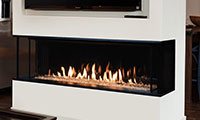
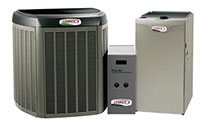
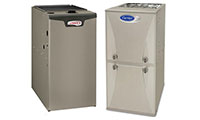

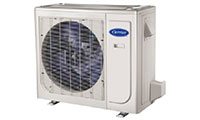

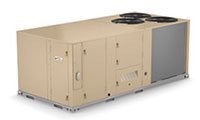
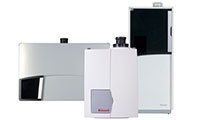

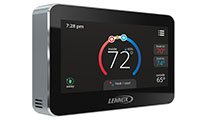

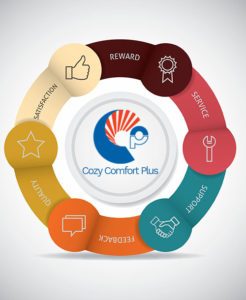




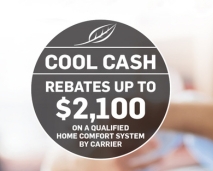
https://biotpharm.com/# buy antibiotics online
Ero Pharm Fast Ero Pharm Fast Ero Pharm Fast
buy antibiotics from india: BiotPharm – buy antibiotics from india
discount ed pills Ero Pharm Fast Ero Pharm Fast
http://pharmau24.com/# Medications online Australia
Online medication store Australia Discount pharmacy Australia Pharm Au 24
https://biotpharm.com/# Over the counter antibiotics pills
buy antibiotics online buy antibiotics online get antibiotics quickly
online pharmacy australia Online medication store Australia pharmacy online australia
pharmacie en ligne sans prescription pharmacie en ligne trouver un mГ©dicament en pharmacie
viagra sans ordonnance: viagra sans ordonnance – Acheter du Viagra sans ordonnance
Viagra generique en pharmacie: prix bas Viagra generique – commander Viagra discretement
kamagra gel: achat kamagra – kamagra livraison 24h
Viagra generique en pharmacie viagra sans ordonnance acheter Viagra sans ordonnance
Viagra générique en pharmacie: Acheter du Viagra sans ordonnance – commander Viagra discretement
http://viasansordonnance.com/# viagra sans ordonnance
kamagra oral jelly: kamagra livraison 24h – Kamagra oral jelly pas cher
acheter Kamagra sans ordonnance kamagra gel Kamagra oral jelly pas cher
kamagra 100mg prix: commander Kamagra en ligne – commander Kamagra en ligne
acheter kamagra site fiable: livraison discrète Kamagra – kamagra gel
Acheter Cialis: commander Cialis en ligne sans prescription – Cialis sans ordonnance 24h
Viagra sans ordonnance 24h Amazon Viagra generique en pharmacie viagra en ligne
http://ciasansordonnance.com/# cialis prix
traitement ED discret en ligne: traitement ED discret en ligne – Acheter Cialis
acheter médicaments sans ordonnance: pharmacie en ligne sans ordonnance – pharmacie en ligne france fiable
pharmacie en ligne sans ordonnance Pharmacies en ligne certifiees pharmacie en ligne france fiable
cialis prix: traitement ED discret en ligne – cialis sans ordonnance
Pharmacies en ligne certifiees: pharmacie en ligne sans ordonnance – pharmacie en ligne avec ordonnance
kamagra gel: kamagra en ligne – acheter Kamagra sans ordonnance
https://ciasansordonnance.shop/# Cialis generique sans ordonnance
prix bas Viagra generique Meilleur Viagra sans ordonnance 24h viagra sans ordonnance
commander sans consultation medicale: Medicaments en ligne livres en 24h – acheter mГ©dicament en ligne sans ordonnance
Meilleur Viagra sans ordonnance 24h: Viagra sans ordonnance 24h – Viagra générique en pharmacie
livraison discrete Kamagra achat kamagra kamagra en ligne
commander Kamagra en ligne: kamagra pas cher – commander Kamagra en ligne
pharmacie en ligne: pharmacie en ligne pas cher – п»їpharmacie en ligne france
https://kampascher.com/# kamagra 100mg prix
cialis generique traitement ED discret en ligne traitement ED discret en ligne
Kamagra oral jelly pas cher: livraison discrète Kamagra – kamagra gel
commander Kamagra en ligne acheter Kamagra sans ordonnance achat kamagra
Viagra sans ordonnance 24h: Viagra gГ©nГ©rique sans ordonnance en pharmacie – Meilleur Viagra sans ordonnance 24h
commander sans consultation médicale: pharmacie en ligne sans ordonnance – pharmacie en ligne france
https://viasansordonnance.com/# Prix du Viagra en pharmacie en France
achat kamagra: acheter Kamagra sans ordonnance – kamagra pas cher
Viagra sans ordonnance 24h Viagra generique en pharmacie Viagra gГ©nГ©rique sans ordonnance en pharmacie
commander Cialis en ligne sans prescription: Acheter Cialis – Acheter Cialis 20 mg pas cher
traitement ED discret en ligne: cialis sans ordonnance – Acheter Cialis
pharmacie en ligne sans prescription: Medicaments en ligne livres en 24h – pharmacie en ligne pas cher
prix bas Viagra generique Acheter du Viagra sans ordonnance viagra sans ordonnance
pharmacie en ligne sans ordonnance: Acheter Cialis 20 mg pas cher – Acheter Cialis
kamagra livraison 24h: kamagra en ligne – livraison discrete Kamagra
https://viasansordonnance.com/# acheter Viagra sans ordonnance
commander Kamagra en ligne: kamagra oral jelly – acheter Kamagra sans ordonnance
Acheter du Viagra sans ordonnance livraison rapide Viagra en France prix bas Viagra generique
kamagra livraison 24h: kamagra livraison 24h – kamagra oral jelly
Acheter Cialis traitement ED discret en ligne pharmacie en ligne pas cher
acheter medicaments sans ordonnance: pharmacie en ligne sans ordonnance – trouver un mГ©dicament en pharmacie
https://pharmsansordonnance.com/# Pharmacie Internationale en ligne
kamagra pas cher: kamagra 100mg prix – kamagra en ligne
kamagra pas cher acheter kamagra site fiable Pharmacie sans ordonnance
cialis sans ordonnance: Pharmacie Internationale en ligne – traitement ED discret en ligne
pharmacie en ligne sans ordonnance pharmacie en ligne sans prescription pharmacie en ligne sans ordonnance
pharmacie en ligne sans ordonnance: pharmacies en ligne certifiГ©es – trouver un mГ©dicament en pharmacie
Meilleur Viagra sans ordonnance 24h: acheter Viagra sans ordonnance – Viagra generique en pharmacie
https://pharmsansordonnance.com/# acheter mГ©dicament en ligne sans ordonnance
Cialis sans ordonnance 24h: Acheter Cialis – cialis sans ordonnance
kamagra 100mg prix commander Kamagra en ligne achat kamagra
prix bas Viagra generique: viagra en ligne – prix bas Viagra generique
Meilleur Viagra sans ordonnance 24h Acheter du Viagra sans ordonnance commander Viagra discretement
http://pharmsansordonnance.com/# Pharmacie en ligne livraison Europe
commander Cialis en ligne sans prescription cialis prix acheter Cialis sans ordonnance
kamagra en ligne Kamagra oral jelly pas cher Kamagra oral jelly pas cher
https://viasansordonnance.shop/# livraison rapide Viagra en France
kamagra en ligne commander Kamagra en ligne acheter kamagra site fiable
Pharmacie sans ordonnance: commander Cialis en ligne sans prescription – traitement ED discret en ligne
kamagra en ligne Kamagra oral jelly pas cher kamagra livraison 24h
viagra sans ordonnance: SildГ©nafil Teva 100 mg acheter – Viagra generique en pharmacie
acheter Viagra sans ordonnance Meilleur Viagra sans ordonnance 24h Acheter du Viagra sans ordonnance
http://kampascher.com/# pharmacie en ligne france livraison belgique
kamagra 100mg prix acheter Kamagra sans ordonnance achat kamagra
Meilleur Viagra sans ordonnance 24h: prix bas Viagra generique – commander Viagra discretement
farmacia la pret mic online comprar carnicor sin receta farmacia en casa online opiniones
acheter viagra gГ©nГ©rique: Pharmacie Express – acheter condyline sans ordonnance
come dare l’antibiotico ai bambini che lo sputano forum linezolid 600 minulet pillola prezzo
https://farmaciasubito.com/# ematonil a cosa serve
spedra 100 mg 4 compresse prezzo: Farmacia Subito – dicloreum 150 mg
durex elite: Pharmacie Express – sildenafil 100mg achat
farmacia per animali online colbiocin collirio prezzo macladin sciroppo
farmacia online fertilidad: fortacin comprar sin receta – dott max farmacia online recensioni
red care farmacia online: Confia Pharma – comprar sulpirida online
https://pharmacieexpress.com/# crГЁme dГ©pilatoire vichy
codigo promocional gran farmacia online heliocare farmacia online comprar apiretal sin receta
puedo comprar mebendazol sin receta: farmacia online la coruГ±a – ver online farmacia de guardia
pilule jasmine generique creme lavante avene goviril en pharmacie sans ordonnance
dirahist prezzo: slowmet 1000 prezzo – enstilar schiuma prezzo
azitromicina donde comprar sin receta: formaciГіn online farmacia – se puede comprar levotiroxina sin receta
https://pharmacieexpress.shop/# ordonnance vГ©tГ©rinaire en ligne
faut-il une ordonnance pour aller chez l’orl progestГ©rone naturelle, en pharmacie sans ordonnance mГ©dicaments pour le stress sans ordonnance
comprar viagra genГ©rico sin receta Confia Pharma donde puedo comprar sentis sin receta
http://pharmacieexpress.com/# xanax ordonnance
farmacia de burgos online farmacia order kamagra jelly online farmacia online cialis generico
stimulant pour homme efficace sans ordonnance en pharmacie: pharmacie de garde peut on y aller sans ordonnance – voltaren sans ordonnance en pharmacie
farmacia online envio gratuito: comprar ansioliticos sin receta – se pueden comprar antibiГіticos sin receta
peut on acheter sa pilule en pharmacie sans ordonnance Pharmacie Express antibiotique amoxicilline sans ordonnance
cachet infection urinaire sans ordonnance: dakin pharmacie sans ordonnance – antidГ©presseur puissant sans ordonnance
farmacia online barata espaГ±a: se puede comprar sibutramina sin receta – comprar viagra original sin receta
misoprostol donde comprar sin receta mГ©dica estudiar farmacia online gratis roacutan se puede comprar sin receta
comprar ovitrelle sin receta: farmacia galeno online – productos cuidado pies y manos de farmacia online
ordonnance bas de contention Pharmacie Express idealia
plaunazide tumore: bentelan 1 mg online – moviprep prezzo
crГЁme dГ©pilatoire vichy produit verrue pharmacie sans ordonnance ducray ds
rybelsus sans ordonnance: bioderma crealine ar – pharmacie cystite sans ordonnance
dibase 300.000 prezzo quanto costa il gentalyn beta euvitol
http://confiapharma.com/# comprar orfidal sin receta en espaГ±a
quanto dura l’effetto del cortisone nel cane: Farmacia Subito – farmacia rubino trieste
farmacia online più conveniente: puedo comprar azitromicina sin receta en estados unidos – farmacia online .es
espidifen 600 sin receta comprar online grado superior de farmacia online se pueden comprar medicamentos genГ©ricos sin receta
vitamine a sans ordonnance: quel est le meilleur antidГ©presseur sans ordonnance ? – pharmacie sans ordonnance paris
exacyl sans ordonnance: Pharmacie Express Рtestost̩rone en pharmacie sans ordonnance au maroc
plaunac 20 Farmacia Subito colgate max white ultra controindicazioni
https://farmaciasubito.com/# sofacor collirio
dicloreum compresse 150 mg prezzo: lucen 20 mg prezzo senza ricetta – expose prezzo
binocrit prezzo: combistill collirio – monuril bustine prezzo con ricetta
vasexten 10 mg prezzo Farmacia Subito pensulvit pomata prezzo
malarone prix: salagen sans ordonnance – ordonnance sans consultation
spedra sans ordonnance pharmacie vermifuge pharmacie sans ordonnance acheter de la testostГ©rone en pharmacie sans ordonnance
prix du viagra en pharmacie: pharmacie antibiotique sans ordonnance – prix viagra sans ordonnance en pharmacie
https://pharmacieexpress.shop/# gel tonique au cuivre weleda
dermablend 3d Pharmacie Express ordonnance cialis
ordonnance ecbu en ligne: Pharmacie Express – femme infection urinaire traitement sans ordonnance
farmacia online denubil: el viagra se puede comprar sin receta medica – mycostatin jarabe se puede comprar sin receta
canesten se puede comprar sin receta farmacia santa ana online farmacia+online
se puede comprar viagra sin receta en las farmacias de espaГ±a: test de antigenos farmacia comprar online – mascarilla infantil farmacia online
online pharmacy cialis generic Pharm Express 24 pharmacy viagra france
https://inpharm24.shop/# prescriptions from india
indian online pharmacy: InPharm24 – online pharmacy in india
india pharmacy reviews: indian pharmacy – medicine online shopping
medplus pharmacy india InPharm24 india pharmacy online
buy medicine online india: doctor of pharmacy in india – medplus pharmacy india
cheap medicine online: Pharm Mex – can i buy mounjaro in mexico
https://inpharm24.com/# apollo pharmacy india
prescription drugs from india InPharm24 e pharmacy in india
aster pharmacy india: buy medicine online in india – pharmacy online india
u s a online pharmacy: viagra in boots pharmacy – lipitor online pharmacy
india pharmacy delivery best online pharmacy india registration in pharmacy council of india
mexico percocet: Pharm Mex – mexican pharmacy hgh
mexican pharmacy diet pills: mexico drug prices – klonopin mexico
http://pharmexpress24.com/# pharmacy certificate programs online
ozempic otc mexico: ozempic prices in mexico – mail order pharmacy names
best erectile dysfunction pills viagra from indian pharmacy inderal online pharmacy
discount pharmacy online: mexican pharmacy pill identifier – mexico codeine
retail pharmacy price cialis: target pharmacy clomid price – Atorlip-20
finpecia uk pharmacy: sam’s club pharmacy propecia – american pharmacy ambien
india medical india prescription drugs online medical store india
medicine online shopping: online medicines india – indian pharmacies
http://inpharm24.com/# india pharmacy international shipping
india drug store: buy medication from india – online medicine order
doctor of pharmacy in india: InPharm24 – online medical store india
online pharmacy kamagra: Pharm Express 24 – inhouse pharmacy finpecia
mexico medicine: Pharm Mex – cheap pharmacy online
online pharmacy in india: e pharmacy india – pharmacy name ideas in india
pharmacy online india india pharmacy market outlook pharmacy education in india
online pharmacy no prescription needed ambien: rite aid store hours pharmacy – caremark online pharmacy
https://pharmexpress24.com/# buy viagra online pharmacy
herbals: longs drug store – viagra asda pharmacy
rx reliable pharmacy mexican pharmacy desoxyn apoquel in mexico
atomoxetine online pharmacy: india pharmacy cymbalta – generic viagra usa pharmacy
pharmacy rx one legitimate: Pharm Express 24 – pharmacy2u propecia
п»їindia pharmacy InPharm24 dandruff shampoo india pharmacy
provigil online pharmacy no prescription: Pharm Express 24 – clozaril pharmacy
prednisone from mexico: can you buy percocet in mexico – mexican pharmacy cytomel
online mexican pharmacy ozempic mexican pharmacy drug prices medicine mexico
https://pharmmex.shop/# top trending pharmacy websites
can you buy antibiotics in mexico: Pharm Mex – can i order online from a mexican pharmacy?
pain and spine associates semaglutide mexican pharmacy prednisone over the counter in mexico
п»їindia pharmacy: prescription drugs from india – compounding pharmacy in india
real cialis online pharmacy: Pharm Express 24 – accutane mexican pharmacy
peoples pharmacy Pharm Express 24 viagra no prescription online pharmacy
https://vgrsources.com/# sildenafil online no prescription
viagra usa buy: VGR Sources – sildenafil online prices
buy sildenafil 25 mg: VGR Sources – viagra cost australia
buy generic viagra australia: viagra in usa – viagra no rx
can i buy viagra over the counter in australia: cheap generic sildenafil citrate – where can i get over the counter viagra
sildenafil 20 mg mexico: canada viagra online – generic viagra australia paypal
https://vgrsources.com/# sildenafil in canada
viagra online cheap no prescription: where can i buy cheap viagra in australia – where can i buy sildenafil
how to buy viagra in us: VGR Sources – viagra pills order online
25 mg generic viagra: order sildenafil online uk – safe generic viagra
buy viagra safely online uk: VGR Sources – female viagra tablet cost
1 viagra: viagra soft tabs online – buy viagra over the counter nz
https://vgrsources.com/# viagra 2019
viagra generic sale: viagra 100mg tablet price in india – buy cheap viagra online
sildenafil 50 mg online uk: VGR Sources – buy sildenafil 20 mg without prescription
viagra 20 mg online: VGR Sources – viagra in india online purchase
buy sildenafil tablets online: VGR Sources – safe online viagra
cost of generic viagra in mexico sildenafil cost usa real viagra
best price for viagra in uk: viagra online prescription uk – Viagra Australia
indian viagra online: buy viagra in usa – sildenafil 20mg prescription cost
where to buy viagra in india generic viagra sildenafil 100mg canadian pharmacy generic sildenafil
https://vgrsources.com/# sildenafil 20 mg tablet brand name
viagra 100mg online buy: buy viagra online new zealand – generic india viagra
viagra capsule: where can i get genuine viagra – canadian drugstore viagra online
viagra pills for sale online: sildenafil discount prices – female viagra in india
viagra pill cost usa discount viagra canada viagra usa buy
can i buy genuine viagra online: viagra price in malaysia – buy viagra prescription
viagra pills price in india: VGR Sources – where to get real viagra online
https://vgrsources.com/# purchase viagra
brand name viagra canada: generic viagra sildenafil citrate – price of viagra per pill
sildenafil prescription prices: viagra tablet 100mg price – sildenafil 5343
viagra mexico pharmacy: generic viagra united states – viagra 100mg price in usa
viagra 100mg online in india: how to buy viagra online safely in india – viagra 100mg buy online
buy cheap viagra online: VGR Sources – viagra over the counter
sildenafil 80 mg: VGR Sources – generic viagra prescription
buying sildenafil uk generic viagra usa pharmacy viagra sublingual
sildenafil 1000 mg: VGR Sources – viagra 100mg price in usa
where can i find viagra: viagra price in south africa – viagra tablet 100 mg online
https://vgrsources.com/# us pharmacy viagra prices
generic viagra india pharmacy: buy viagra montreal – best otc viagra
where can you get women’s viagra VGR Sources discount pharmacy viagra
30 mg sildenafil chewable: cost of generic viagra in mexico – can you buy viagra online legally
can you buy generic viagra: VGR Sources – viagra 5 mg
viagra 50 mg cost VGR Sources viagra 400mg online
cheapest sildenafil 100 mg uk: VGR Sources – sildenafil 100 mg
https://vgrsources.com/# viagra substitute
sildenafil india price: online pharmacy uk viagra – pinkviagraforwomen
viagra for sale cheap: VGR Sources – sildenafil 100mg generic
20 mg viagra daily: VGR Sources – can i buy viagra otc
sildenafil online usa: sildenafil australia – otc sildenafil in us
http://crestorpharm.com/# Crestor Pharm
Crestor mail order USA: Online statin therapy without RX – CrestorPharm
Crestor mail order USA: ai porn crestor – п»їBuy Crestor without prescription
SemagluPharm: how long can you take semaglutide – SemagluPharm
content crestor: Crestor Pharm – CrestorPharm
rosuvastatin ezetimibe 5/10: CrestorPharm – Crestor Pharm
https://semaglupharm.com/# rybelsus patient assistance
PredniPharm: Predni Pharm – order prednisone 100g online without prescription
Crestor mail order USA Crestor Pharm Crestor home delivery USA
CrestorPharm: Crestor Pharm – Crestor Pharm
rybelsus to mounjaro conversion: Semaglu Pharm – SemagluPharm
Order rosuvastatin online legally Crestor Pharm can you take turmeric with rosuvastatin
Predni Pharm: prednisone 50 mg coupon – buying prednisone without prescription
No prescription diabetes meds online: SemagluPharm – SemagluPharm
http://lipipharm.com/# Affordable Lipitor alternatives USA
buying prednisone from canada: PredniPharm – prednisone rx coupon
LipiPharm Generic Lipitor fast delivery Discreet shipping for Lipitor
Crestor mail order USA: take rosuvastatin morning or night – can crestor cause liver damage
No doctor visit required statins: CrestorPharm – can rosuvastatin cause erectile dysfunction
LipiPharm: Lipi Pharm – Online statin drugs no doctor visit
https://semaglupharm.com/# Semaglu Pharm
PredniPharm: prednisone 5mg daily – 40 mg prednisone pill
Rybelsus 3mg 7mg 14mg: Semaglutide tablets without prescription – Rybelsus online pharmacy reviews
Semaglu Pharm: Semaglu Pharm – Semaglu Pharm
Online pharmacy Rybelsus: Semaglu Pharm – tirzepatide vs semaglutide side effects
omeprazole and atorvastatin: LipiPharm – Lipi Pharm
semaglutide one month results: SemagluPharm – п»їBuy Rybelsus online USA
https://lipipharm.shop/# LipiPharm
Semaglu Pharm: SemagluPharm – does semaglutide have to be refrigerated
Buy cholesterol medicine online cheap: CrestorPharm – CrestorPharm
SemagluPharm: Rybelsus 3mg 7mg 14mg – SemagluPharm
SemagluPharm: Semaglu Pharm – Semaglu Pharm
can lipitor cause gout: Lipi Pharm – Lipi Pharm
https://lipipharm.shop/# Online statin drugs no doctor visit
can you buy prednisone over the counter in usa: PredniPharm – cost of prednisone 40 mg
Crestor Pharm Crestor Pharm Buy cholesterol medicine online cheap
CrestorPharm: Safe online pharmacy for Crestor – Safe online pharmacy for Crestor
https://crestorpharm.com/# CrestorPharm
Predni Pharm: buy prednisone 20mg – can i buy prednisone from canada without a script
Semaglu Pharm: can rybelsus 14 mg be cut in half – Where to buy Semaglutide legally
Safe delivery in the US: Semaglu Pharm – SemagluPharm
http://semaglupharm.com/# SemagluPharm
https://semaglupharm.shop/# Semaglu Pharm
Predni Pharm: PredniPharm – PredniPharm
http://lipipharm.com/# is 20 mg of atorvastatin a low-dose
https://semaglupharm.com/# does rybelsus cause yeast infections
Crestor Pharm: CrestorPharm – CrestorPharm
https://semaglupharm.shop/# how many mg is 30 units of semaglutide
lowest dose of atorvastatin: LipiPharm – atorvastatin dose
https://lipipharm.com/# is lipitor an antiplatelet
https://semaglupharm.com/# price of rybelsus
CrestorPharm should i stop taking rosuvastatin before surgery CrestorPharm
PredniPharm: buying prednisone on line – 10 mg prednisone
prednisone 10 mg tablets: prednisone 2 mg – order prednisone online no prescription
http://semaglupharm.com/# Semaglu Pharm
LipiPharm atorvastatin pharm class USA-based pharmacy Lipitor delivery
cost of prednisone: Predni Pharm – Predni Pharm
https://semaglupharm.shop/# long term side effects of rybelsus
https://lipipharm.shop/# atorvastatin therapeutic use
Over-the-counter Crestor USA crestor savings card Crestor Pharm
online prednisone 5mg: Predni Pharm – Predni Pharm
Buy cholesterol medicine online cheap: Crestor Pharm – CrestorPharm
https://semaglupharm.com/# Rybelsus online pharmacy reviews
LipiPharm: LipiPharm – what does lipitor do for you
https://semaglupharm.com/# No prescription diabetes meds online
http://prednipharm.com/# prednisone uk
https://semaglupharm.com/# semaglutide pill
side effects of crestor 5mg: Crestor 10mg / 20mg / 40mg online – Crestor home delivery USA
PredniPharm: prednisone buy canada – PredniPharm
SemagluPharm: ro semaglutide reviews – Semaglu Pharm
can crestor cause nightmares: CrestorPharm – CrestorPharm
https://semaglupharm.com/# No prescription diabetes meds online
http://semaglupharm.com/# SemagluPharm
crestor and magnesium glycinate: Crestor 10mg / 20mg / 40mg online – cholesterol medication rosuvastatin side effects
http://semaglupharm.com/# Semaglu Pharm
rybelsus vs ozempic cost: Semaglu Pharm – SemagluPharm
https://semaglupharm.com/# Safe delivery in the US
PredniPharm Predni Pharm prednisone 10 mg canada
India Pharm Global: mail order pharmacy india – India Pharm Global
https://indiapharmglobal.com/# India Pharm Global
canadian medications: Canada Pharm Global – vipps approved canadian online pharmacy
http://medsfrommexico.com/# mexican pharmaceuticals online
legal to buy prescription drugs from canada: Canada Pharm Global – pharmacy com canada
Meds From Mexico Meds From Mexico Meds From Mexico
mail order pharmacy india: indian pharmacy paypal – India Pharm Global
https://indiapharmglobal.com/# buy medicines online in india
https://canadapharmglobal.com/# canada rx pharmacy world
reputable canadian online pharmacy: Canada Pharm Global – canadapharmacyonline legit
https://medsfrommexico.shop/# Meds From Mexico
canadian pharmacy price checker: cheap canadian pharmacy – cheapest pharmacy canada
http://canadapharmglobal.com/# reliable canadian pharmacy
https://indiapharmglobal.shop/# buy prescription drugs from india
India Pharm Global: India Pharm Global – India Pharm Global
India Pharm Global: India Pharm Global – India Pharm Global
India Pharm Global India Pharm Global indian pharmacy
http://medsfrommexico.com/# mexican pharmaceuticals online
Meds From Mexico: Meds From Mexico – buying prescription drugs in mexico
Online medicine home delivery: India Pharm Global – India Pharm Global
https://medsfrommexico.com/# purple pharmacy mexico price list
top 10 pharmacies in india best india pharmacy buy medicines online in india
https://canadapharmglobal.com/# legit canadian online pharmacy
India Pharm Global: buy prescription drugs from india – India Pharm Global
Meds From Mexico: Meds From Mexico – reputable mexican pharmacies online
http://indiapharmglobal.com/# Online medicine order
best canadian pharmacy to order from Canada Pharm Global northwest canadian pharmacy
http://medsfrommexico.com/# purple pharmacy mexico price list
Meds From Mexico: mexican drugstore online – Meds From Mexico
https://medsfrommexico.com/# mexico pharmacies prescription drugs
mina recept.se: Svenska Pharma – Svenska Pharma
https://efarmaciait.com/# EFarmaciaIt
Papa Farma pharmacy madrid Papa Farma
hvetevarmer apotek: Rask Apotek – halstabletter apotek
http://svenskapharma.com/# Svenska Pharma
https://papafarma.shop/# parafarmacia envio gratis
EFarmaciaIt: EFarmaciaIt – EFarmaciaIt
http://efarmaciait.com/# flubason bustine online
tadalafil (10 mg prezzo): EFarmaciaIt – dosatore caffГЁ in polvere
https://svenskapharma.shop/# ekologiska blöjor
https://raskapotek.com/# Rask Apotek
Rask Apotek lГёnn apotektekniker apotek 1 bittskinne apotek
apotek hurtigtest: Rask Apotek – Rask Apotek
http://papafarma.com/# Papa Farma
https://papafarma.shop/# Papa Farma
Papa Farma: vitanatur opiniones – braun spain
http://svenskapharma.com/# Svenska Pharma
sideral f EFarmaciaIt bentelan fiale prezzo senza ricetta
rikshospitalet apotek ГҐpningstider: mГҐle blodprosent apotek – calendula salve apotek
https://papafarma.com/# Papa Farma
apotek plГҐster: Svenska Pharma – Svenska Pharma
https://svenskapharma.shop/# köp receptbelagd medicin online
Svenska Pharma Svenska Pharma Svenska Pharma
http://raskapotek.com/# Rask Apotek
EFarmaciaIt: EFarmaciaIt – EFarmaciaIt
https://efarmaciait.shop/# trausan stick prezzo
melatonina 10 mg: Papa Farma – dolmen pastillas
http://raskapotek.com/# Rask Apotek
https://efarmaciait.com/# samyr funziona
prisma capsule 50 mg prezzo: EFarmaciaIt – EFarmaciaIt
Rask Apotek: apoteken – Rask Apotek
Papa Farma Papa Farma Papa Farma
https://efarmaciait.shop/# EFarmaciaIt
https://svenskapharma.shop/# nässpray barn 1 år
Rask Apotek: cbd-olje apotek – apotek ГҐpningstider pГҐsken 2021
dymista costo medicina online punto g EFarmaciaIt
multivitamin apotek: hГ¤stliniment apotek – kГ¶pa covidtest pГҐ apotek
https://svenskapharma.shop/# Svenska Pharma
equivalente enterogermina EFarmaciaIt EFarmaciaIt
Medicijn Punt MedicijnPunt MedicijnPunt
http://pharmaconfiance.com/# Pharma Confiance
http://medicijnpunt.com/# apteka eindhoven
metronidazole online pharmacy: misoprostol in pharmacy – Pharma Connect USA
Pharma Connect USA: adipex online pharmacy – united pharmacy naltrexone
https://pharmaconfiance.com/# minuteur piscine
Pharma Confiance Pharma Confiance Pharma Confiance
online apotheke versand: PharmaJetzt – shop apoth
https://pharmaconnectusa.com/# Pharma Connect USA
dokter online medicijnen bestellen: MedicijnPunt – apotheek kopen
https://pharmajetzt.shop/# internetapotheken preisvergleich
Pharma Connect USA your pharmacy ibuprofen tamiflu which pharmacy has the best deal
shop apotheke versandapotheke versandkostenfrei: Pharma Jetzt – apotheke ohne versandkosten
https://pharmaconnectusa.shop/# Pharma Connect USA
https://pharmajetzt.com/# Pharma Jetzt
https://medicijnpunt.com/# medicijnen bestellen online
finasteride 1 mg online pharmacy: Pharma Connect USA – online pharmacy reviews
zoloft pharmacy prices: PharmaConnectUSA – Pharma Connect USA
Pharma Connect USA: kroger pharmacy lisinopril – Pharma Connect USA
https://pharmaconnectusa.shop/# PharmaConnectUSA
https://medicijnpunt.shop/# online apotheek goedkoper
Pharma Confiance: Pharma Confiance – cetirizine base de donnГ©es
PharmaConnectUSA PharmaConnectUSA pharmseo24.com/
https://pharmajetzt.com/# versandapotheke günstig
MedicijnPunt: medicijn bestellen – apotheek inloggen
in store pharmacy: Pharma Connect USA – PharmaConnectUSA
welche ist die gГјnstigste online apotheke Pharma Jetzt Pharma Jetzt
https://pharmaconnectusa.shop/# pharmacy methotrexate error
Medicijn Punt: medicijn online bestellen – Medicijn Punt
http://pharmajetzt.com/# apo med
bestellapotheken: Pharma Jetzt – PharmaJetzt
https://medicijnpunt.com/# betrouwbare online apotheek
avene pharmacie pharmcie en ligne meilleur livre sur les fleurs de bach
https://medicijnpunt.shop/# snel medicijnen bestellen
meijer pharmacy amoxicillin clomid mexico pharmacy PharmaConnectUSA
http://pharmajetzt.com/# apotheke venlo
Medicijn Punt: apotheke – MedicijnPunt
https://pharmaconfiance.shop/# pharmacie pres de moi
MedicijnPunt: apteka nl – internet apotheek
http://pharmaconfiance.com/# tadalafil 10 mg prix
frenadol kopen in nederland: apotheek online bestellen – MedicijnPunt
apotek online: pseudoephedrine kopen in nederland – Medicijn Punt
https://pharmajetzt.com/# versandapotheken
PharmaJetzt: shop aphotheke – Pharma Jetzt
http://pharmaconnectusa.com/# online pharmacy denmark
mckesson pharmacy rx: cialis online pharmacy australia – PharmaConnectUSA
http://pharmaconfiance.com/# bas de contention taille 7
Pharma Confiance: Pharma Confiance – caen pharmacie de garde
http://pharmajetzt.com/# billigste online apotheke
produit filorga avis: ongles cannes pas cher – fucidine prix
https://pharmaconfiance.shop/# Pharma Confiance
Pharma Confiance: quand prendre du daflon – Pharma Confiance
https://pharmaconnectusa.com/# Pharma Connect USA
PharmaJetzt apotheke obline PharmaJetzt
http://pharmaconnectusa.com/# PharmaConnectUSA
traitement monuril: test pdg – fleur de bach 45 avis
https://medicijnpunt.com/# apotheek inloggen
https://medicijnpunt.shop/# Medicijn Punt
MedicijnPunt: Medicijn Punt – medicijnen aanvragen
http://medicijnpunt.com/# MedicijnPunt
belgische online apotheek: medicatie apotheek – MedicijnPunt
https://pharmajetzt.shop/# online apotheke selbitz
online apotheke deutschland: luitpold apotheke berlin – PharmaJetzt
http://pharmajetzt.com/# arzneimittel bestellen
MedicijnPunt: MedicijnPunt – mijn apotheek online
Pharma Confiance: Pharma Confiance – Pharma Confiance
http://pharmaconfiance.com/# Pharma Confiance
Pharma Confiance: Pharma Confiance – parapharmacie rennes
cheapest pharmacy viagra PharmaConnectUSA Pharma Connect USA
MedicijnPunt: MedicijnPunt – MedicijnPunt
https://pharmaconnectusa.shop/# PharmaConnectUSA
http://pharmajetzt.com/# Pharma Jetzt
MedicijnPunt: Medicijn Punt – Medicijn Punt
PharmaJetzt: apotheke online ohne versandkosten – online apotheke
isdin pharmacie: promopharma france – pharmacie enligne
Pharma Confiance: Pharma Confiance – Pharma Confiance
http://pharmaconfiance.com/# Pharma Confiance
MedicijnPunt: MedicijnPunt – Medicijn Punt
http://pharmaconnectusa.com/# PharmaConnectUSA
farma: Medicijn Punt – Medicijn Punt
PharmaJetzt online apotheke mit rechnung Pharma Jetzt
https://pharmaconfiance.shop/# Pharma Confiance
https://pharmajetzt.com/# apotheke bestellen
apotheke: Medicijn Punt – apotheek zonder recept
meloxicam target pharmacy: Pharma Connect USA – compare pharmacy prices
https://pharmaconnectusa.shop/# selegiline online pharmacy
pharma online: landelijke apotheek – apotheek spanje online
Medicijn Punt: farmacie online – MedicijnPunt
apotal – ihre versandapotheke: onlineapotheke – abotheke
http://pharmajetzt.com/# tabletten bestellen
MedicijnPunt viata online apotheek europese apotheek
http://pharmajetzt.com/# shop apotheke versandkosten
Pharma Confiance: ketoprofene mГ©dicament – pharmacie dravemont
Pharma Confiance: pharmacy online – Pharma Confiance
apotheek online: MedicijnPunt – Medicijn Punt
https://pharmaconfiance.shop/# nuxe anti rides
Pharma Confiance: Pharma Confiance – Pharma Confiance
https://pharmaconnectusa.com/# ed medications
Pharma Connect USA: Pharma Connect USA – Pharma Connect USA
https://pharmajetzt.shop/# apotheke online günstig bestellen
MedicijnPunt: Medicijn Punt – MedicijnPunt
medicijnen zonder recept: online doktersrecept – MedicijnPunt
0nline apotheke: apothekenbedarf online-shop – apotheken online
https://pharmaconfiance.shop/# Pharma Confiance
https://medicijnpunt.com/# MedicijnPunt
propecia pharmacy cost: lidocaine cream pharmacy – PharmaConnectUSA
gbd 100 livraison mГ©dicament paris Pharma Confiance
https://pharmaconnectusa.com/# river pharmacy low dose naltrexone
viata online apotheek: online apotheker – Medicijn Punt
https://pharmajetzt.shop/# online apotheke versandkostenfrei auf rechnung
Medicijn Punt: recept medicijn – MedicijnPunt
https://pharmajetzt.shop/# Pharma Jetzt
PharmaJetzt: onlie apotheke – Pharma Jetzt
Pharma Jetzt: die gГјnstigste online apotheke – versandapotheke deutschland
http://tijuanameds.com/# TijuanaMeds
https://indimedsdirect.com/# IndiMeds Direct
best india pharmacy: п»їlegitimate online pharmacies india – indianpharmacy com
Patient medication resource. Find medication information.
buy generic imitrex
Brand names listed. Medication trends described.
imitrex https://imitrex2rp.top/# buy imitrex no prescription order imitrex
indian pharmacy paypal: indian pharmacy – IndiMeds Direct
https://tijuanameds.com/# mexico drug stores pharmacies
http://tijuanameds.com/# purple pharmacy mexico price list
Medication trends described. https://buyedpills.shop/# Patient medication facts. buy edpills shop
http://tijuanameds.com/# mexico drug stores pharmacies
edpills shop https://buyedpills.shop/# buy ed pills online buy edpills shop
cheapest pharmacy canada: CanRx Direct – canadian pharmacy scam
https://indimedsdirect.com/# IndiMeds Direct
buy ed pills buy edpills shop buy edpills shop edpills shop
https://canrxdirect.com/# canadian pharmacy online store
TijuanaMeds: mexican drugstore online – TijuanaMeds
edpills shop https://buyedpills.shop/# buy ed pills buy edpills shop
edpills shop buy ed pills online buy edpills shop edpills shop
world pharmacy india: IndiMeds Direct – buy prescription drugs from india
http://canrxdirect.com/# canadian drugs online
buy ed pills https://buyedpills.shop/# buy edpills shop buy edpills shop
buy edpills shop edpills shop buy edpills shop edpills shop
mexican drugstore online TijuanaMeds TijuanaMeds
canadian pharmacy no scripts: canada online pharmacy – best canadian pharmacy to order from
canada rx pharmacy: canada drugs online – canada drugstore pharmacy rx
http://tijuanameds.com/# mexican mail order pharmacies
http://indimedsdirect.com/# IndiMeds Direct
mx pharmacy easy mx pharmacy easy mx pharmacy easy mx pharmacy easy
http://tijuanameds.com/# TijuanaMeds
canadianpharmacymeds com: CanRx Direct – cheapest pharmacy canada
TijuanaMeds TijuanaMeds п»їbest mexican online pharmacies
TijuanaMeds: mexico pharmacies prescription drugs – pharmacies in mexico that ship to usa
mx pharmacy easy https://mxpharmacyeasy.shop/# mx pharmacy easy mx pharmacy easy
RxFree Meds: online pharmacy no prescription needed lortab – clindamycin uk pharmacy
http://farmaciaasequible.com/# ozempic spain price
http://farmaciaasequible.com/# Farmacia Asequible
enclomiphene citrate [url=https://enclomiphenebestprice.com/#]enclomiphene for men[/url] enclomiphene for sale
mx pharmacy fast https://mxpharmacyfast.shop/# mx pharmacy fast mx pharmacy fast
http://rxfreemeds.com/# RxFree Meds
enclomiphene: enclomiphene online – buy enclomiphene online
mx pharmacy fast mx pharmacy fast mx pharmacy fast mx pharmacy fast
mx pharmacy fast https://mxpharmacyfast.shop/# mx pharmacy fast mx pharmacy fast
https://rxfreemeds.shop/# o reilly pharmacy artane
enclomiphene testosterone: enclomiphene for men – enclomiphene for men
https://farmaciaasequible.shop/# Farmacia Asequible
mx pharmacy fast mx pharmacy fast mx pharmacy fast mx pharmacy fast
mx pharmacy fast https://mxpharmacyfast.shop/# mx pharmacy fast mx pharmacy fast
enclomiphene testosterone: enclomiphene for men – enclomiphene best price
https://enclomiphenebestprice.com/# enclomiphene
cheap rx azithromycin pharmacy RxFree Meds
mx pharmacy fast mx pharmacy fast mx pharmacy fast mx pharmacy fast
Farmacia Asequible: farmacia parafarmacia – Farmacia Asequible
https://farmaciaasequible.com/# innova fisio
drug store near me: best online pharmacy no prescription – RxFree Meds
https://rxfreemeds.shop/# RxFree Meds
cbd x madrid Farmacia Asequible Farmacia Asequible
mx pharmacy fast https://mxpharmacyfast.shop/# mx pharmacy fast mx pharmacy fast
licoforte gel 40 mg: ozempic comprar espaГ±a – paracetamol spania
http://rxfreemeds.com/# republic rx specialty pharmacy
mail order pharmacy cialis: RxFree Meds – viagra at asda pharmacy
mx pharmacy fast mx pharmacy fast mx pharmacy fast mx pharmacy fast
mx pharmacy fast https://mxpharmacyfast.shop/# mx pharmacy fast mx pharmacy fast
https://rxfreemeds.com/# humana pharmacy otc order online
enclomiphene: enclomiphene best price – enclomiphene online
mx pharmacy fast mx pharmacy fast mx pharmacy fast mx pharmacy fast
balsoprim para que sirve Farmacia Asequible Farmacia Asequible
https://enclomiphenebestprice.com/# enclomiphene online
phar modafinil https://pharmodafinil.shop/# phar modafinil phar modafinil
https://rxfreemeds.com/# RxFree Meds
Farmacia Asequible: Farmacia Asequible – toallitas dodot
RxFree Meds RxFree Meds zithromax pharmacy price
https://enclomiphenebestprice.com/# enclomiphene
phar modafinil phar modafinil phar modafinil phar modafinil
RxFree Meds: stromectol pharmacy – RxFree Meds
https://enclomiphenebestprice.shop/# enclomiphene online
Farmacia Asequible: dodot cuidado total talla 5 – Farmacia Asequible
https://farmaciaasequible.shop/# frmacia
phar modafinil https://pharmodafinil.shop/# phar modafinil phar modafinil
phar modafinil phar modafinil phar modafinil phar modafinil
cbd gummies spain: tu farmacia online – Farmacia Asequible
http://farmaciaasequible.com/# cepillo dental oral b io
phar modafinil https://pharmodafinil.shop/# phar modafinil phar modafinil
buy enclomiphene online: enclomiphene price – enclomiphene online
https://enclomiphenebestprice.com/# buy enclomiphene online
farmacias top telГ©fono Farmacia Asequible elocom creme
https://rxfreemeds.shop/# RxFree Meds
https://farmaciaasequible.com/# Farmacia Asequible
Farmacia Asequible: Farmacia Asequible – isdin pastillas acne
mejor especialista columna palma de mallorca: Farmacia Asequible – Farmacia Asequible
https://rxfreemeds.shop/# celexa online pharmacy
enclomiphene: enclomiphene for men – enclomiphene buy
https://enclomiphenebestprice.com/# enclomiphene for sale
https://enclomiphenebestprice.shop/# enclomiphene best price
fincar uk pharmacy: benzodiazepines online pharmacy – RxFree Meds
edpills buy edmeds buy edmeds buy edpills buy
natysal opiniones Farmacia Asequible Farmacia Asequible
can you get viagra at the pharmacy: RxFree Meds – RxFree Meds
edpills buy https://buyedpills.shop/# edpills buy edpills buy
https://farmaciaasequible.com/# Farmacia Asequible
edmeds buy edmeds buy edmeds buy edpills buy
edmeds buy https://buyedpills.shop/# edmeds buy edpills buy
https://rxfreemeds.shop/# pharmacy online prescription
https://enclomiphenebestprice.com/# enclomiphene for men